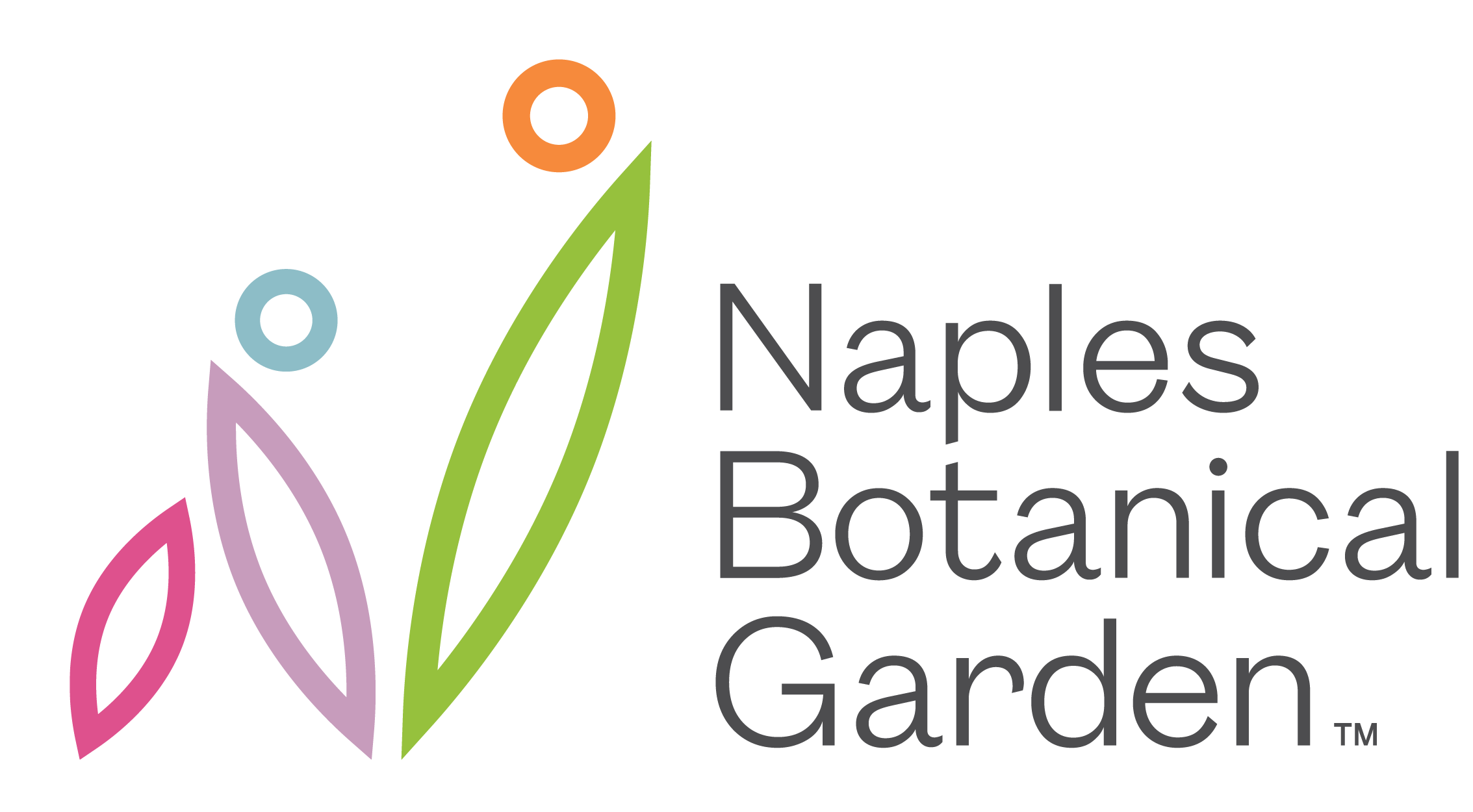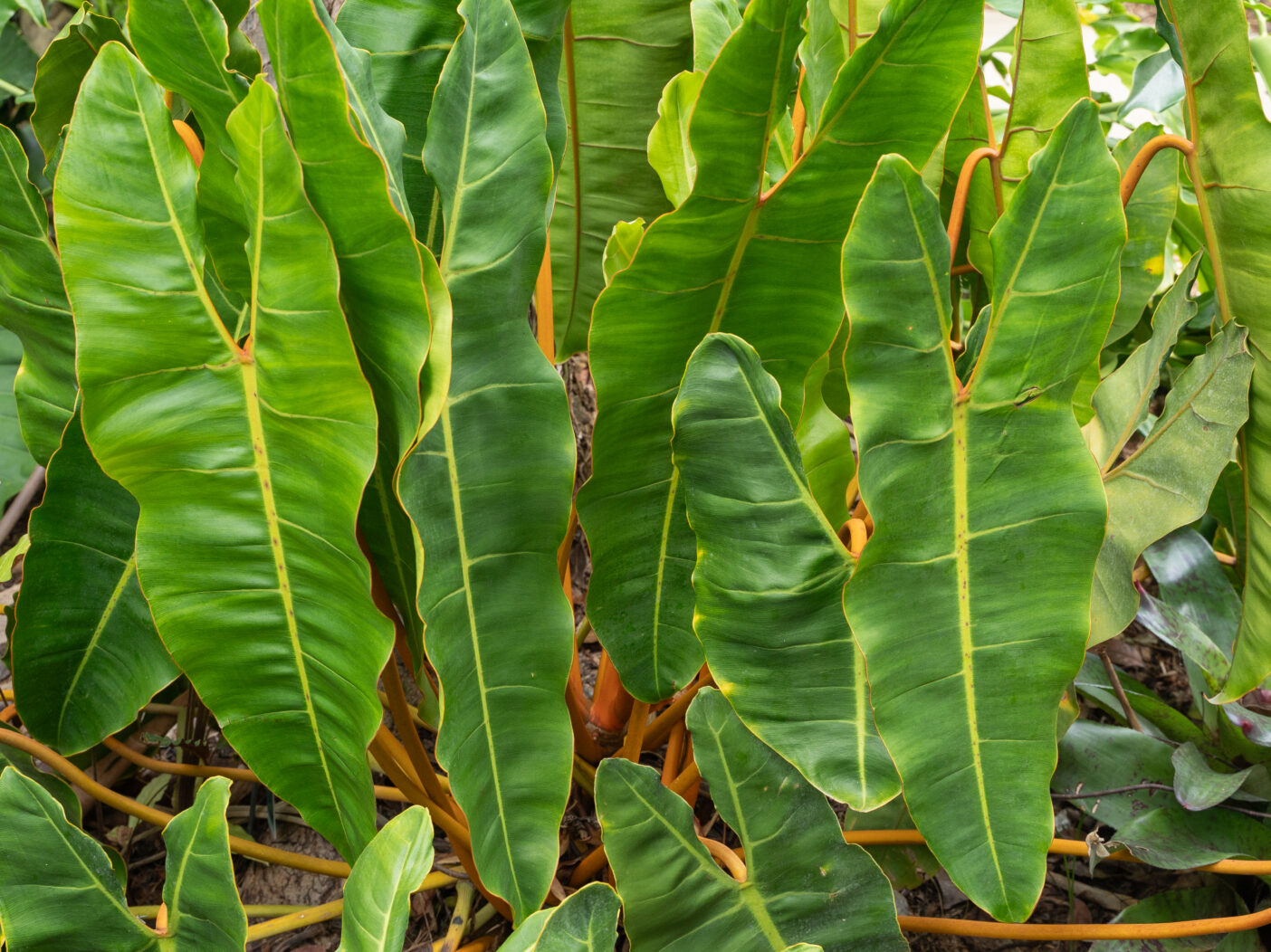
Not long ago, I traveled to every plant nursery I know in pursuit of the Monstera deliciosa ‘Albo Borsigiana.’ At each stop, the staff practically laughed at me. That’s because these plants are typically sold before they ever hit the shelves. Aroids (Monstera among them) are some of the most highly sought house plants. This is because of their beautiful heart- and arrow-shaped leaves, colors, variations, ease of care, and range of species and cultivars. Naples Botanical Garden abounds with aroids of all types. The Garden is a great place to discover how this coveted indoor plant can also be a fantastic landscape accent.
Where to Find Them:
Kathryn’s and Irma’s Gardens
Look for vast groupings here, including Anthurium cultivars, a colorful tropical icon also known “flamingo flower,” and Dieffenbachia, a native of the Americas that comes in cool greens and blues.
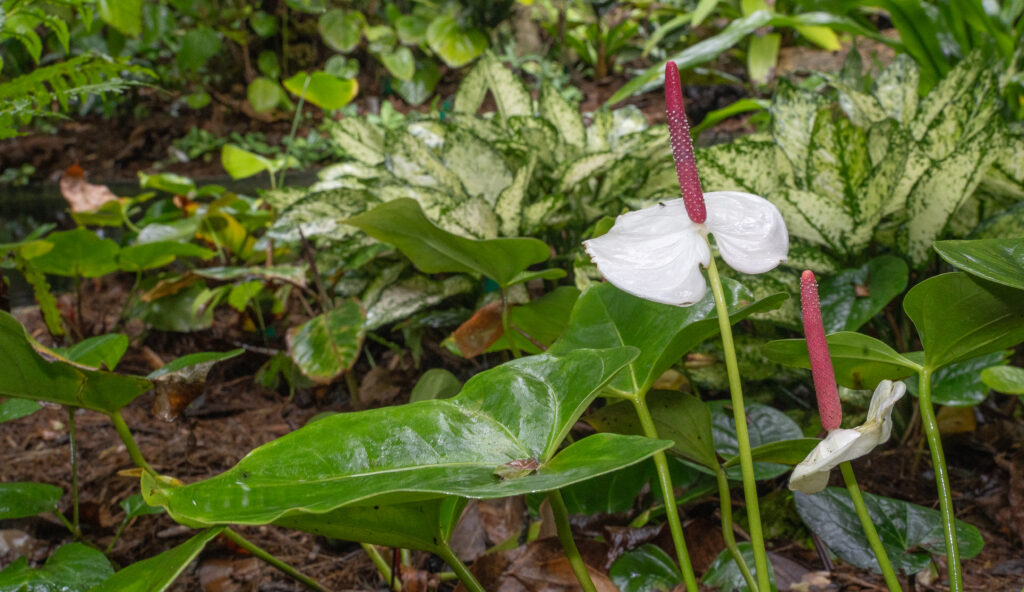
Near the End of the Smith Entry Prow
A Thai Constellation (Monstera deliciosa) with beautifully patterned leaves emerges from the base of a tree. Look for an array of aroids, including a pair of purple Anthurium ‘Water Dragon,’ under a screw pine, followed by a giant Monstera growing outside Kapnick Hall.
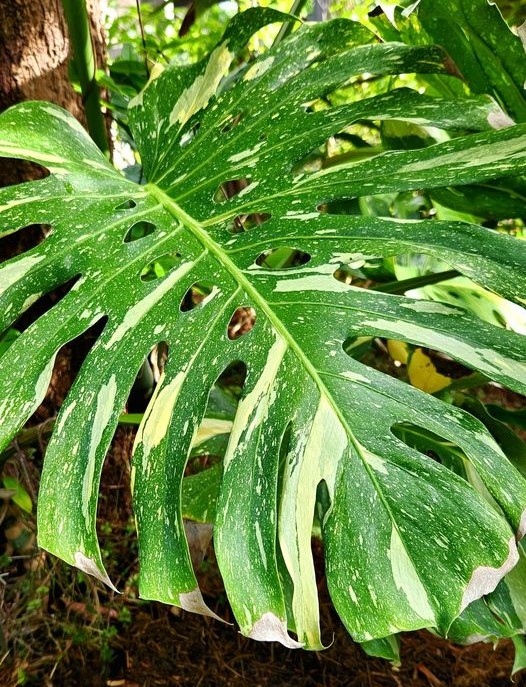
Lea Asian Garden
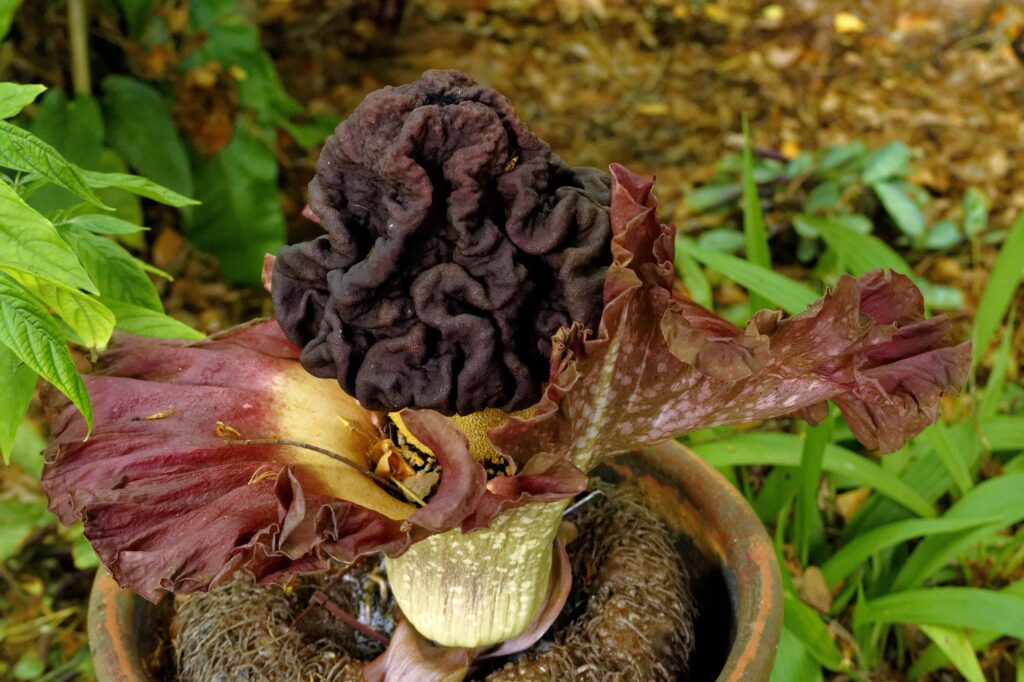
We are unique in our ability to grow some cold-sensitive aroids outdoors, including species in the Amorphophallus genus. Find Amorphophallus paeoniifolius, the elephant foot yam, along the path near the reflecting pools. Look for clusters of leaves and mottled trunk-like stems.
How to Grow Your Own Aroids
Aroid species can be terrestrial, aquatic, epiphytic (grown on trees), lithophilic (grown on rock faces), or even hemi-epiphytic, spending part of their lives connected to a host.
- Lighting depends on the species and its variegation. Variegated species are more sensitive due to their lack of pigment, preferring shade and indirect sunlight.
- Pests are common, especially with plants in the Alocasia, Caladium, and Colocasia genera. Spider mites and mealy bugs are typical nuisances. For a quick fix, spray the plant with a hose; for a more thorough approach, mix a solution of dish soap and water and apply to all surfaces. Neem oil or horticultural oil can be added; apply in the evenings when the direct sunlight will not burn the plants.
- Most aroids (except for aquatic species) don’t like to have their roots submerged. You can check moisture levels by poking your finger about 1 inch into the soil. If dry, your plants are ready to be watered. If moist, let them dry out before adding water. Moisture readers are also easy to find in most garden stores. Take moisture readings at the same spot every time for consistency.
- Aroids prefer a loose, airy soil mixture of bark, perlite (puffed white stone), and soil. Equal parts of these with an occasional treatment of low-strength organic fertilizer keeps them happy.
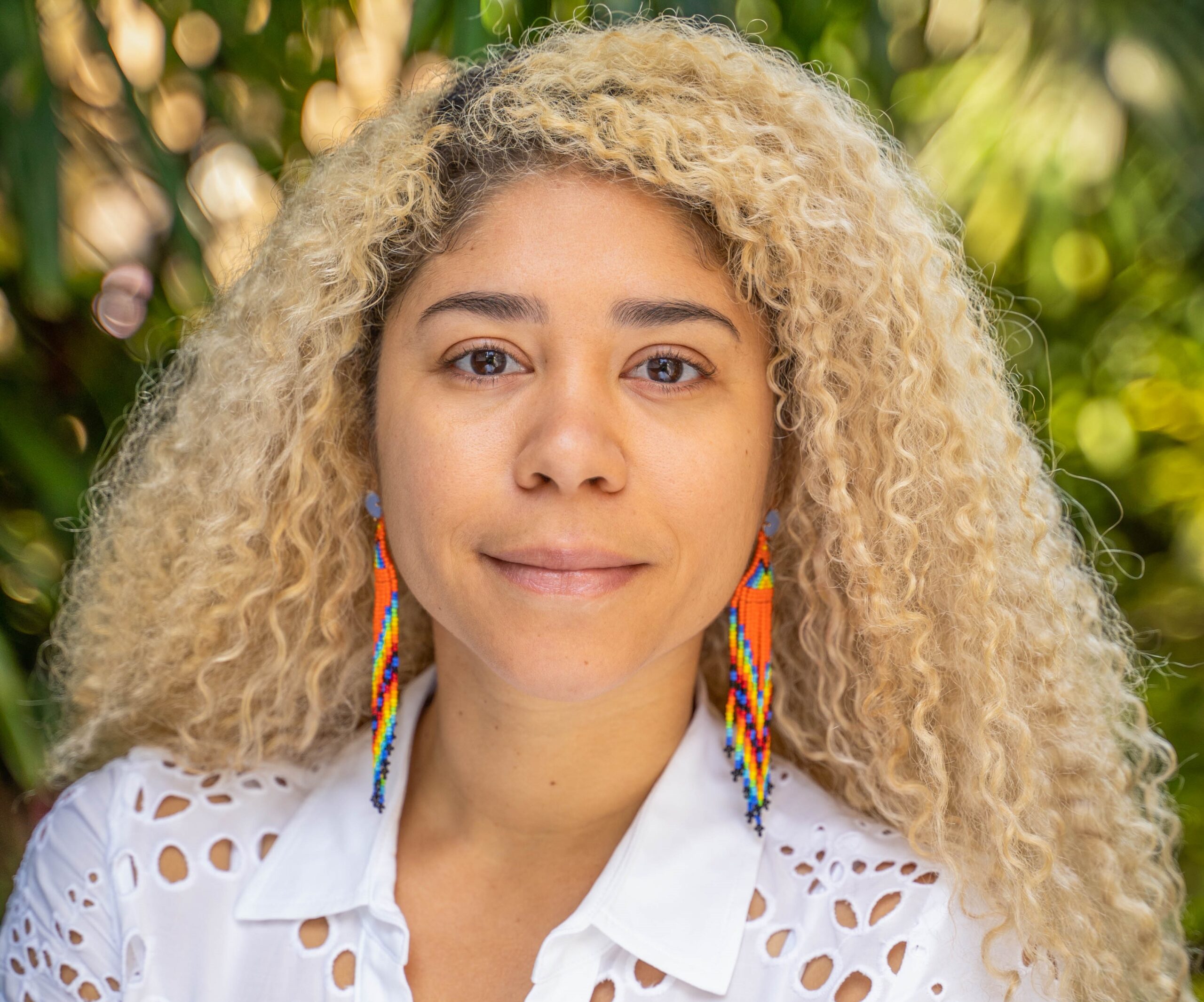
About the Author
Kristin Hood is an Executive Assistant for Naples Botanical Garden. She is a longtime plant enthusiast and co-owner of Plant Parenthood NYC.
